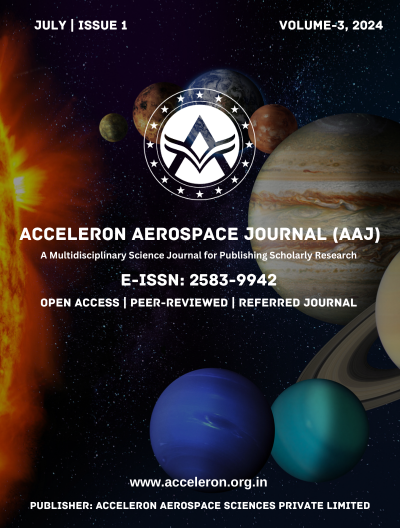Celestial Choreography: Optimizing Mars Mission Trajectories through Gravity Assists
DOI:
https://doi.org/10.61359/11.2106-2430Keywords:
Mars Missions, Trajectories, MATLAB Simulation, Orbital STK, Olympus Mons, Mars LandingAbstract
Mars exploration has become a focal point for medical, technological, and human endeavours. The success of these missions closely depends on optimizing spacecraft trajectories to ensure performance and cost-effectiveness. This paper delves into the significance of trajectory optimization and the pivotal role gravity assists play in interplanetary missions, particularly those aimed at Mars. In our study, we applied advanced simulation tools, including MATLAB, to model and optimize mission trajectories. Our research also includes Computational Fluid Dynamics (CFD) simulations of the Mars probe, focusing on incompressible flow tests around the probe's frame. A novel aspect of our design is the addition of a turbo-dynamic fan mounted on the outer boundary of the rover. This innovation is intended to reduce the descent velocity of the probe through the Martian atmosphere, improving landing precision and safety. Furthermore, our study explores the Olympus Mons area, a towering 27 km high Martian volcano, as a prime location for sample collection. By optimizing the trajectory and fuel usage, our simulations show how samples can be efficiently collected and returned to Mars orbit, ultimately facilitating their return to Earth. The trajectory calculations and visualizations provided offer valuable insights for future missions, aiming to balance fuel efficiency and mission success. This research not only highlights the quantitative benefits of trajectory optimization through gravity assists but also showcases the practical implications of innovative design improvements in space exploration. The lessons learned from our simulations and analyses are poised to significantly impact future Mars missions, paving the way for more efficient and effective exploration strategies.
Downloads
Downloads
Published
How to Cite
Issue
Section
Categories
License
Copyright (c) 2024 Acceleron Aerospace Journal

This work is licensed under a Creative Commons Attribution 4.0 International License.
The Acceleron Aerospace Journal, with ISSN 2583-9942, uses the CC BY 4.0 International License. You're free to share and adapt its content, as long as you provide proper attribution to the original work.





